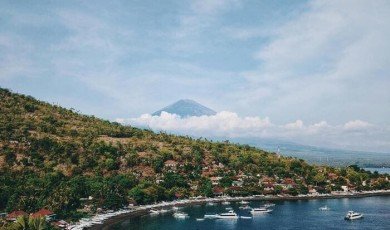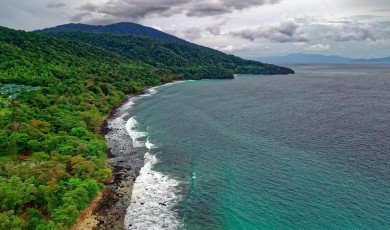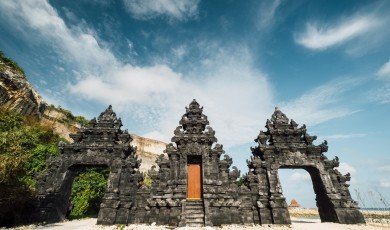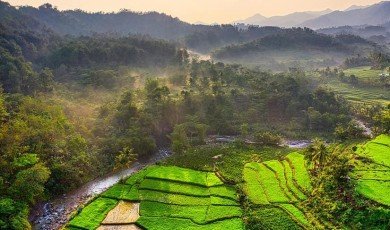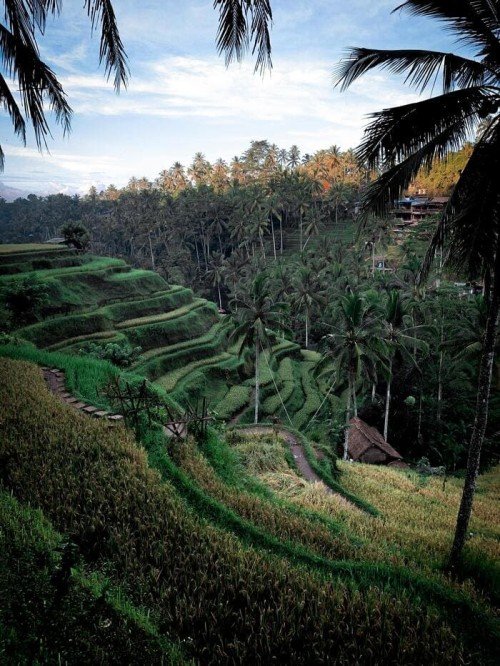
Indonesia is more than a country; it’s a living mosaic of color, sound, and soul. Stretching across more than 17,000 islands between the Indian and Pacific Oceans, this vast archipelago beats with a rhythm all its own. From the misty highlands of Java to the turquoise waters of Raja Ampat, every corner tells a story — of harmony, faith, nature, and human connection. To discover the heart of Indonesia is to step into a world where tradition and modernity dance together under a single, eternal sun.
A Land Woven from Many Worlds
Few countries on Earth offer the diversity of Indonesia. Over 700 languages are spoken here, and each island boasts its own identity, cuisine, and way of life. On one island, you might hear the gamelan’s metallic melodies echoing through an ancient temple; on another, children race along beaches of black volcanic sand. Bali may be the crown jewel for many travelers, but the heart of Indonesia beats just as strongly in places less known — in the rice terraces of Toraja, the jungles of Kalimantan, and the coral gardens of Sulawesi. Indonesia is not one story, but thousands intertwined, creating an experience that feels both vast and intimate.
The Spirit of Community and Connection
At the core of Indonesian life lies a word that doesn’t fully exist in English: gotong royong, meaning mutual cooperation and shared effort. It defines how communities work together, how neighbors support each other, and how visitors are welcomed not as strangers but as temporary family. From vibrant village festivals to traditional dance performances, the warmth of Indonesian hospitality is legendary. In Yogyakarta, artisans still handcraft batik the way their ancestors did centuries ago. In Lombok, locals invite travelers to share meals cooked over wood fires. In every gesture, there’s a quiet message: connection matters more than distance.
Nature’s Endless Masterpiece
Indonesia’s landscapes are as breathtaking as its people. Home to some of the world’s most dramatic natural wonders, the country seems designed to inspire awe. Towering volcanoes pierce the clouds in Java and Sumatra. Ancient rainforests shelter orangutans in Borneo. Coral reefs shimmer beneath the crystal-clear seas of the Maluku Islands. For adventurers, Indonesia is paradise. You can hike Mount Bromo at sunrise, dive among manta rays in Komodo National Park, or sail across Flores to see volcanic lakes that shift colors with the light. Yet even in its wildest places, there’s a balance — between nature and spirit, between humans and the sacred land they inhabit.
A Modern Nation Rooted in Heritage
While Indonesia embraces technology, innovation, and modern design, it never loses sight of its roots. Jakarta’s skyline grows taller every year, yet traditional markets still thrive in the shadow of skyscrapers. Startups flourish, artists collaborate globally, and young Indonesians use digital platforms to share their culture with the world.
This coexistence of old and new is what makes Indonesia’s heart so magnetic. It is a country that moves forward without forgetting where it began — a place where digital nomads, business travelers, and backpackers alike find common ground in shared humanity. Even across such a vast and linguistically diverse country, communication remains key. Businesses, tourism operators, and government agencies often rely on remote interpreting services to bridge language gaps between local communities and international partners. These tools ensure that Indonesia’s voice — from Bali’s entrepreneurs to Sumatra’s conservationists — can reach the world clearly, without barriers.
The Cultural Pulse of Faith and Art
Indonesia’s cultural energy is inseparable from its spirituality. Mosques call to prayer at dawn, church bells ring in the distance, and Balinese offerings decorate doorsteps with flowers and incense. Faith here is not merely practiced; it’s lived through daily rituals that celebrate gratitude and peace. Art flows through everything — from the carved masks of Java to the graceful movements of the Balinese legong dance. The storytelling traditions of wayang kulit, or shadow puppetry, blend mythology with social commentary, showing that creativity and wisdom can share the same stage.
For travelers, artists, and thinkers, Indonesia is not just a destination but an inspiration. It’s a reminder that expression takes infinite forms — in language, art, music, and community.
Indonesia in a Connected World
As global travel and remote collaboration grow, Indonesia stands as a cultural bridge between East and West. International conferences, digital trade, and humanitarian initiatives all find fertile ground here. However, true connection depends on more than technology — it relies on understanding. That’s why remote interpreting services are increasingly vital in Indonesia’s tourism and business ecosystems. They allow people from different linguistic and cultural backgrounds to connect seamlessly — whether during virtual meetings, cross-border negotiations, or live cultural exchanges. They turn distance into dialogue and ensure that the “magic heart” of Indonesia can be heard in every language.
Beyond the Islands
To understand Indonesia is to embrace contrast — the silence of temples and the noise of markets, the calm of rice fields and the rush of modern cities, the ancient and the futuristic side by side. It is a place where simplicity meets depth, where every journey feels like a rediscovery of what it means to be human. The heart of Indonesia doesn’t beat in just one island, one city, or one landmark. It beats in the people — in their stories, songs, and smiles. And for anyone lucky enough to listen, that rhythm stays with you long after you’ve left.
The Pulse of the Archipelago
To discover the magic heart of Indonesia is to uncover the essence of connection. It’s the laughter of children on a ferry between islands, the scent of kopi luwak brewing at dawn, and the quiet moments shared with strangers who become friends. Indonesia teaches the world that diversity is not a challenge but a gift — that unity can grow from difference, and that communication, whether spoken, sung, or translated, keeps us human. The islands may be separated by miles of ocean, but their stories, hearts, and hopes remain intertwined. That is the true magic of Indonesia — a place that connects not just lands, but souls.
